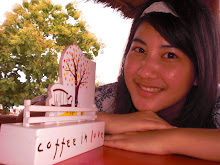Temples in Taiwan are also good attractions for tourists. Taiwan has more than 5000 temples, including from single room shrines to many stories temples. All of these temples are active places for worship.

I have been to some Chinese temples in Thailand but never really get to know what do people do there. Here I got a chance to know more about Chinese temple
I have been to some Chinese temples in Thailand but never really get to know what do people do there. Here I got a chance to know more about Chinese temple
I have been to some Chinese temples in Thailand but never really get to know what do people do there. Here I got a chance to know more about Chinese temple

There are three main varieties of temple in Tawian: Buddhist, Taoist and Confucius temples- reflecting Taiwan’s religious make-up. I think this one is Taoist temple. Temples here are unique blend of Buddhist and Taoist belief- and the physical merging of the two temples into single structures since the widespread during the 50 years Japanese occupation of Taiwan.

Taoist Temples tend to be bright and colourful structures, with broad curving roofs and traditional symbols of luck such as dragons and carp.
While the temples do not have resident monks or nuns, they are often filled with devotees, and are used as the base for many ceremonies ranging from parades to exorcisms. Taoist ceremonies are as brash and colorful as their temples, with music, chanting and firecrackers. I have joined some ceremonies at this temple and everything was run by local people and temple's committees. They have a special calender which says when do they have a ceremony at the temple. It's usually once or twice a month when everybody gets together at night around 9 until 12 to pray. If it is a big ceremony then they will use a large oven which is usually located in the central area to burn sacrificial 'Ghost Money' as an offering to ancestral spirits.

Going to the temple the other day I got a chance to learn writing Chinese by brush. It's one kind of arts. I thought it was easy since I also write Japanese but to make your Chinese characters beautiful was not that easy like what I thought.
Traveling through Taiwan you will find temples at every turn, each one a unique place that plays a vibrant role in the life and soul of modern Taiwan.
Traveling through Taiwan you will find temples at every turn, each one a unique place that plays a vibrant role in the life and soul of modern Taiwan.

No comments:
Post a Comment